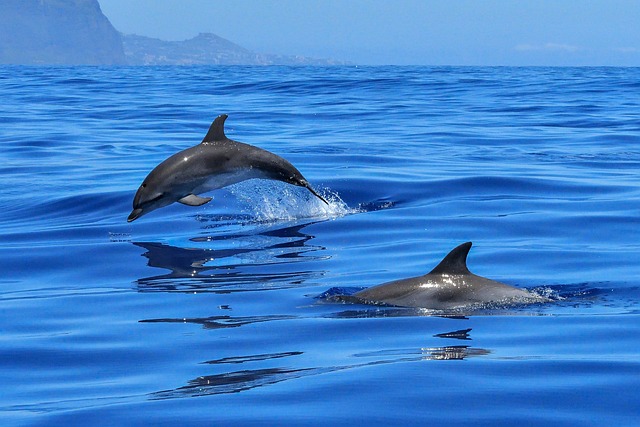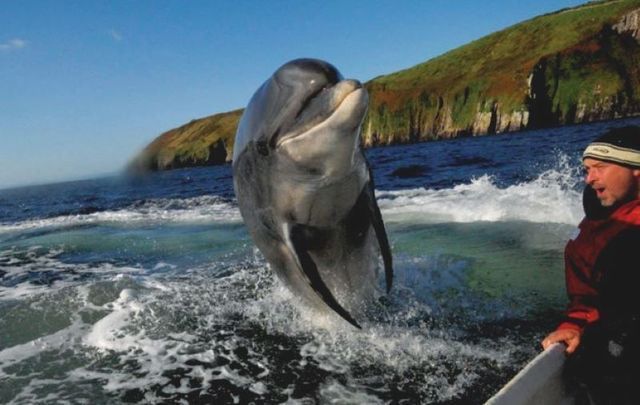 You may have heard the saying, “a dog is a man’s best friend,” but what about dolphins? Did you know, dolphins and humans have a special relationship extending back more than 140 years? Talk about being old friends!
You may have heard the saying, “a dog is a man’s best friend,” but what about dolphins? Did you know, dolphins and humans have a special relationship extending back more than 140 years? Talk about being old friends!
For more than a century, fishermen in Laguna, a city located in Santa Catarina, Brazil, have caught mullet fish with the help of their trusted pals: bottlenose dolphins!
The dolphins push schools of mullet fish in the direction of the shore and then swoop out of the water, signaling to the fishermen to promptly cast out their nets. The fishers make a large catch, and in return, the dolphins forage for the fish that missed the fishing nets–a quick and easy meal!
This dolphin-human interaction is especially unique, because it is symbiotic, meaning that both humans and dolphins are positively impacted by this interaction. Let’s continue reading to find out more about this fascinating relationship.
The Unique Dolphin-Human Interaction
 According to research conducted with drones and underwater sound recordings by the Proceedings of the National Academy of Sciences, dolphins engaging in this mutualistic relationship with humans are 13% more likely to survive in the wild.
According to research conducted with drones and underwater sound recordings by the Proceedings of the National Academy of Sciences, dolphins engaging in this mutualistic relationship with humans are 13% more likely to survive in the wild.
This is because they stay near the shores of the ocean and are less likely to be harmed by bycatch when fishing nets are thrown into the open ocean. These nets unintentionally catch marine animals like dolphins and sea turtles.
In Laguna, fishing with fellow dolphins has become a tradition in many families, though the dolphins are not intentionally trained or domesticated for this purpose. From their experiences, fishermen pass on their knowledge to their children, teaching them to communicate with their partners through clicking noises and how to discern dolphin behaviors.
Interestingly, this is not the first time humans and other species of animals have teamed up to hunt for food together. In Africa, the honeyguides, a small bird species that feed on beeswax, use chirping noises and calls to communicate, leading humans to trees where bees’ nests are hidden. Native American people were also accompanied by wolves in hunting for bison and other larger animals.
Impact Of Climate Change
The mullet population is one of the primary food sources for dolphins and fishers.
However, the warming of the ocean’s waters caused by climate change is resulting in the fish population changing swimming directions, instead of coming towards the shore. This means that there will be fewer fish available for local communities and dolphins alike to catch. Also, the mutually beneficial relationship between humans and the local dolphins, which has existed for generations and hinges on the mullet fish, may be at risk.
Preserving the human-dolphin interaction goes hand-in-hand with maintaining Laguna's rich culture and customs. As Dr. Cantor, a biologist at Oregon State University and an author of this research, notes, “Trying to preserve cultural diversity is an indirect way of preserving biological diversity, too.”
Researchers hope to stabilize the mullet population by increasing regulations against the use of illegal fishing nets. Bringing awareness to this rare, mutualistic relationship between dolphins and humans may potentially allow it to be recognized by Brazil as a part of the community's cultural heritage, providing it with greater protection under the country.
While climate change poses a serious risk to the extinction of such a practice in Laguna, there is still hope that future generations will be able to carry on this special tradition.
Sources: Washington Post, Smithsonian, NPR, Wiley.com







